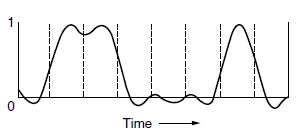Dimostrare che qualsiasi linguaggio finito è regolare (oppure no)
Un linguaggio regolare finito riconosce un insieme finito di stringhe.
Posso costruire un automa sotto forma di albero in cui il percorso più lungo corrisponde alla stringa più lunga.
Quindi è possibile costruire un automa il cui numero massimo di stati è la lunghezza della stringa più lunga per il numero di lettere.
